
Logan and Albert Conservation Association

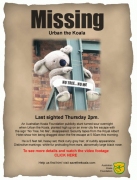 Uban is lost. When his carer went to feed him he had left his tree. His moving was partially captured on video camera. Go to Australian Koala Foundation website here to see if you can help track him down.
Uban is lost. When his carer went to feed him he had left his tree. His moving was partially captured on video camera. Go to Australian Koala Foundation website here to see if you can help track him down.
NO TREE NO ME - unless Urban is in care and foster carers attend to his needs on a regular basis.
CAN YOU PLEASE HELP FIND URBAN - who symbolizes the plight of all koalas in South East Queensland.
Draft South East Queensland Regional Plan submission one is opportunity for we who care to help protect koala habitat! Closing date is 3 April 2009.
 The Australian Koala Foundation (AKF) has warned the Queensland Government's new koala habitat mapping project will expose the South East Queensland koala population to extinction.
The Australian Koala Foundation (AKF) has warned the Queensland Government's new koala habitat mapping project will expose the South East Queensland koala population to extinction.
AKF CEO Deborah Tabart said the Queensland Government recently employed engineering consultants to undertake ‘extensive' mapping of koala habitat in South East Queensland; mapping intended to assist in the species' protection. The project, worth nearly one million dollars did not go to tender, even though other consultants could have competed for the work.
"Sadly, the methodology is significantly flawed and will leave surviving koalas and habitat without any protection in this fast-growing region," Ms Tabart said.
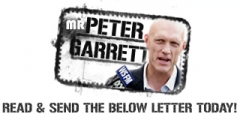 On the 10th December, 2008 the Australian Koala Foundation nominated South East Queensland's koala population as critically endangered. The Federal Government bureaucrats say the form 'was not filled in correctly.'
On the 10th December, 2008 the Australian Koala Foundation nominated South East Queensland's koala population as critically endangered. The Federal Government bureaucrats say the form 'was not filled in correctly.'
IF YOU CARE about the future of the koala in South East Queensland - and especially South West Logan, then please phone write and email the key politicians.
With the Queensland state election coming, you can use the links here at the Koala Foundation to generate a letter to the key political decision makers involved to support the nomination.
 Koalas get more than 90 per cent of their water from eucalyptus leaves. Eucalyptus leaves - which koalas depend on for survival - are being destroyed by abnormally high levels of greenhouse gases. Scientists warned early in 2008 that increased levels of carbon dioxide in the atmosphere were reducing nutrient levels in the leaves, and also boosting their toxic tannin content.
Koalas get more than 90 per cent of their water from eucalyptus leaves. Eucalyptus leaves - which koalas depend on for survival - are being destroyed by abnormally high levels of greenhouse gases. Scientists warned early in 2008 that increased levels of carbon dioxide in the atmosphere were reducing nutrient levels in the leaves, and also boosting their toxic tannin content.
Koala is an aboriginal word that means "doesn't drink". This is because koalas get more than 90 per cent of their water from eucalyptus leaves, which are toxic to most species. The only time they drink is when they fall ill or there is not enough moisture on leaves such as during droughts.
Click read more to view photos taken in Victoria earlier this year. They illustrate how desperately thirsty these wild animals are if they are prepared to approach humans to get water.
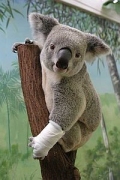 'New research makes roads safer for koalas' is the statement released on Monday, 16 February 2009 by Minister for Main Roads and Local Government
'New research makes roads safer for koalas' is the statement released on Monday, 16 February 2009 by Minister for Main Roads and Local Government
The Honourable Warren Pitt. The press release is quoted towards the end of this article.
While it is commendable that the minister and his Departments recognize the terrible impact that road construction has on the mortality of koalas and other animals, this 'solution' is not recognising the major impact on the long term survival of koalas in SEQ and elsewhere.
The greatest cause of decline for koalas is LOSS OF HABITAT for any reason. The future proposal for huge increases in population to SEQ, Logan Ipswich and Scenic Rim Region in particular, will result in habitat loss for koalas for both human dwellings and infrastructure deemed necessary those people.
LACA recently submitted this media release to local papers: Jimboomba Times, Logan West Leader, Beaudesert Times.
The recent rehabilitation and return of Babe the koala to Jimboomba after a dog attack is great news. Despite this happy ending, koalas in South-east Queensland are under serious threat and urgently need our help.
According to the EPA and Australian Koala Foundation, koala populations are in decline in many parts of South-east Queensland. The greatest threats to koalas after habitat loss are cars and dogs.
GHD consultants are currently collecting koala sightings for South-east Queensland as part of a state government Koala Habitat Mapping Project. Koala information can be forwarded to This email address is being protected from spambots. You need JavaScript enabled to view it. by 5 pm Friday 13th February.
A previous report by GHD consultants for Moreton Regional Council in 2008 showed a 46% decline in the last 6 years in Pine Rivers' urban koala population density. An EPA report in 2007 also showed koala numbers in the Koala Coast Area (including parts of Brisbane City Council, Redlands and Logan) had declined by 27 % from 6246 in 1997 to 4610 in 2005. Koala populations in Logan had declined by 26% and Brisbane by 21%. The largest declines occurred in areas associated with the Urban Footprint.
"The Koala Coast Area has traditionally been recognized in South-east Queensland as having a higher density of koalas and being a koala stronghold. But with koala numbers now confirmed to be in decline in these areas, this makes koalas in other parts of South-east Queensland such as Logan and Scenic Rim crucial to sustaining this iconic species for the future," said Anne Page, spokesperson for the Logan and Albert Conservation Association.
The EPA report also concluded that it was critical to maintain koala populations in urban and bushland areas to sustain viable and healthy populations.
"It is critical that koala habitat is identified and protected now for the best environmental outcomes. Koalas are the faunal emblem of Queensland and an iconic Australian animal famous worldwide - it is up to all of us to help protect this species for future generations."
Despite these predicted declines in koalas in South-east Queensland, massive development is still proposed for Logan Council and Scenic Rim Regional Council with population increases of 30 000 for Park Ridge MPA, 25 000 for Greenbank, 60 000 for Flagstone and 60 000 for Yarrabilba as part of the SEQRP. The koala populations of Logan Council and the Scenic Rim Regional Council are still unknown. To date no official koala surveys have been conducted to identify and map Koala Conservation Areas.
"Under the Koala Conservation Plan, the areas with the highest level of protection are Koala Conservation Areas, but these areas must be surveyed and mapped. Without koala mapping, no serious protection is given to koalas," said Anne Page. Previous community reported sightings collected by LACA confirm that koalas occur in Logan Village, Chambers Flat, Park Ridge, Park Ridge South, Munruben Woods, Munruben Forest, Greenbank, New Beith, Flagstone, North Maclean, Tamborine, Mundoolun, Jimboomba, Stockleigh, Yarrabilba, Buccan, Veresdale Scrub, Cedar Vale, Canungra, Palen Creek, Mt Barney, Rathdowney, Cedar Creek, Wolffdene, Rathdowney, Beaudesert, and Bromelton.
You can help protect the koala
• Do encourage local and state government to fast track koala mapping for local area
• Do drive slowly through wildlife signed areas or habitat areas
• Do secure dogs at night
• Do report koala sightings in your local area to EPA Wildnet.
The community may also comment on the Draft Koala State Planning Regulatory Provisions until 27 February.
Enquiries can be made on 1800 070 609. More detail can be obtained on www.laca.org.au
Contact Details: Anne Page (Secretary) ph 3297 0624 or Kathy Faldt (Vice President) ph 3200 0129
The tragic bushfires in Victoria will change forever the way we live in the bush. Both human and animal suffering and death are cruel and soul destroying. However the people of Australia and global communities are rallying to support the survivors.
'Sam' the koala may or may not have been a victim of the fires but she is definitely a victim of the intense drying heat in Victoria which has dessicated the leaves of the eucalypts such that thirst has overcome warriness of humans for many Victorian koalas who have allowed humans close enough to provide water.
It is commonly believed that koalas do not drink water. Whenever they do it is an indication of stress.
These websites are accepting donations to help the animal survivors - both native and domestic animals. You can donate securely online at www.wildlifevictoria.org.au and www.rspcavic.org.au.
 IFAW's Emergency Relief Team is already on the ground helping local wildlife caretakers with search and rescue operations, providing medical treatment to burned and abandoned animals that are emerging from the fire zone - koalas, possums, kangaroos, dogs, even horses and birds - as well as food and vet supplies. But recovery for many animals will be a long process, and we desperately need to raise funds to help over the long term with medical supplies, animal cages, blankets and towels.
IFAW's Emergency Relief Team is already on the ground helping local wildlife caretakers with search and rescue operations, providing medical treatment to burned and abandoned animals that are emerging from the fire zone - koalas, possums, kangaroos, dogs, even horses and birds - as well as food and vet supplies. But recovery for many animals will be a long process, and we desperately need to raise funds to help over the long term with medical supplies, animal cages, blankets and towels.
You can also donate through IFAW the International Fund for Animal Welfare to provide emergency relief to animals in crises, and save pets and wildlife around the world.
 Anthony Mitrow reporter from the Jimboomba Times continues to follow local koala's story of survival in paper dated 21 January 2009. The koala's future survival depends on all of us. Unless Babe's habitat is surveyed and mapped for inclusion in the 2009 SEQ Regional Plan it will have no protection. REPORT YOUR SIGHTINGS and help make this happen.
Anthony Mitrow reporter from the Jimboomba Times continues to follow local koala's story of survival in paper dated 21 January 2009. The koala's future survival depends on all of us. Unless Babe's habitat is surveyed and mapped for inclusion in the 2009 SEQ Regional Plan it will have no protection. REPORT YOUR SIGHTINGS and help make this happen.
BABE the koala has been hit by a car, chased by dogs and suffered a urinary tract infection, but the little survivor has now been released back into his natural habitat in Jimboomba after months of rehabilitation.
The young animal has spent the last four and a half months at Australia Zoo where it underwent treatment for a range of injuries.
Babe first came to the attention of Jimboomba resident John King-Bayliss when he found the animal on Marks Road, Jimboomba. Mr King-Bayliss chased the dogs away and contacted Logan City Council who searched the area for the dogs which were not found, before confirming the koala was safe.
Later that evening Mr King-Bayliss found Babe injured on the side of the road.
"It had been hit by a car. It had blood coming from his mouth and he couldn't use one of his arms." Mr King-Bayliss said.he made calls to animal wildlife organizations but was unable to get help until he was given the number for Waterford-based wildlife carer Mark Alexander from Wildlife Answers .
 The Queensland government long term planning strategy for protecting koala habitat values through planning and development process is the establishment of a new Koala State Planning Policy in 2009.
The Queensland government long term planning strategy for protecting koala habitat values through planning and development process is the establishment of a new Koala State Planning Policy in 2009.
The finalisation of the mapping and a new Koala State Planning Policy will, we hope, help determine the appropriate protection mechanisms to ensure the long term protection of koalas in SEQ. The timing of this work will also allow the outcomes to be considered in the final SEQ Regional Plan 2009-2031 in July 2009. The draft SEQ Regional Plan 2009-2031 is open for submissions from December 2008 to 3 April 2009.
Draft SEQ Koala State planning regulatory provisions can be downloaded here.
Submissions close 27 February 2009
 Logan & Albert Conservation Association has been advised that groups can express interest by emailing This email address is being protected from spambots. You need JavaScript enabled to view it. whereupon an information package will be distributed describing how to supply any information. We are doing this. If you do not belong to a group and have sightings to report please contact us.
Logan & Albert Conservation Association has been advised that groups can express interest by emailing This email address is being protected from spambots. You need JavaScript enabled to view it. whereupon an information package will be distributed describing how to supply any information. We are doing this. If you do not belong to a group and have sightings to report please contact us.
Contributions will be required by 13 February 2009 to the appointed study team at GHD.
NOW CLOSED but comment on QG Draft Koala Plan open until 27 February 2009
The Queensland Government is taking action to address threats to koalas in Southeast Queensland based on recommendations of the Koala Taskforce. One of the key actions recommended is to undertake extensive mapping of koala habitat in South East Queensland.
EPA Queensland Environmental Protection Agency has commenced a koala habitat assessment and mapping study across SEQ to assist in the protection of this threatened species in the region.
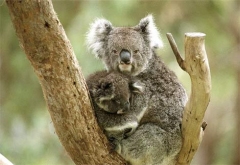 Scientists and researchers from Queensland University and from Queensland University of Technology are trying to learn more about koalas' breeding habits by listening to the animals' bellows. Mobile phones and GPS collars are being used. This study was reported by National Geographic. The brief news clip with male koala vocalisations is available here.
Scientists and researchers from Queensland University and from Queensland University of Technology are trying to learn more about koalas' breeding habits by listening to the animals' bellows. Mobile phones and GPS collars are being used. This study was reported by National Geographic. The brief news clip with male koala vocalisations is available here.
Meanwhile concerned citizens fear for the long term survival of koalas in their natural environment. Debbie Tabart from the Australian Koala Fountation is featured on this video advocating for a National Koala Plan.
 The draft South East Queensland Koala State Planning Regulatory Provisions came into effect on 12 December 2008. The Department of Infrastructure and Planning is now the concurrence agency under the Integrated Planning Act 1997 for defined development in Urban Koala Areas and in Koala Sustainability Areas that are within the Urban Footprint as defined in the South East Queensland Regional Plan 2005-2026.
The draft South East Queensland Koala State Planning Regulatory Provisions came into effect on 12 December 2008. The Department of Infrastructure and Planning is now the concurrence agency under the Integrated Planning Act 1997 for defined development in Urban Koala Areas and in Koala Sustainability Areas that are within the Urban Footprint as defined in the South East Queensland Regional Plan 2005-2026.
You can download a copy of draft SEQ Koala SPRP from this page 128kb pdf and copies of regulatory maps are here. Unfortunately there is no mapping - and no protection for country Logan (former Beaudesert Shire) and Scenic Rim areas. A list of future growth areas includes Bahrs Scrub, Beaudesert, Bromelton, Canungra, Flagstone, Greenbank, Park Ridge, and Yarrabilba - none of them mapped ie with some protection.
 It is difficult to understand government decisions at times - and especially since the Queensland government website clearly states that the greatest threat to koalas is loss of habitat. The only way protection is 'guaranteed' is when legistation exists or is created - as governments do - to control actions and activities.
It is difficult to understand government decisions at times - and especially since the Queensland government website clearly states that the greatest threat to koalas is loss of habitat. The only way protection is 'guaranteed' is when legistation exists or is created - as governments do - to control actions and activities.
The Koala Plan provides a certain level of protection for areas of habitat that have been surveyed and documented and included in the plan. Queensland government allocated $2.1 million over 4 years to match local councils' spending on surveys - until recently. The website was updated 7 November 2008 but disappointingly does not included the report from the KOALA TASKFORCE.
More disappointment for our members too when we heard that state government has withdrawn its matching $ for $ subsidy for koala surveys in Logan City. This part of Southeast Queensland has been targeted for fast - tracked housing subdivisions for Queensland's growing population - but areas have been flagged without any studies for koalas or other wildlife. Local residents have been sending sightings of koalas (and other wildlife - including spotted tailed quolls) to EPA Wildnet for some time. We know there are koalas here - but they or their habitat is not proected until the habitat is mapped.
The report of other koala habitat surveys is available from this link. Also available is data including major causes of death from 1997 to end April - from Koala hospital presentations. Download from this page.
 Logan and Albert Conservation Association LACA ,Brisbane Region Environment Council BREC and Residents Action on Infrastructure Development and Environment RAIDE have been working with the EPA, Main Roads Metro, Main Roads Nerang and Logan City Council for the last 3 years to provide a dedicated fauna underpass immediately south of Stoney Camp Rd and Granger Rd (under the Mt Lindesay Highway) and to improve the environmental designs of the highway to facilitate local and regional fauna movement. This is part of the regional biodiversity corridor and is used by wildlife - eastern grey kangaroos koalas and other less visible to us fauna. Munruben Wetlands locally called Jerry's Downfall is also where the nationally endangered spotted tailed quoll has been 'spotted'.
Logan and Albert Conservation Association LACA ,Brisbane Region Environment Council BREC and Residents Action on Infrastructure Development and Environment RAIDE have been working with the EPA, Main Roads Metro, Main Roads Nerang and Logan City Council for the last 3 years to provide a dedicated fauna underpass immediately south of Stoney Camp Rd and Granger Rd (under the Mt Lindesay Highway) and to improve the environmental designs of the highway to facilitate local and regional fauna movement. This is part of the regional biodiversity corridor and is used by wildlife - eastern grey kangaroos koalas and other less visible to us fauna. Munruben Wetlands locally called Jerry's Downfall is also where the nationally endangered spotted tailed quoll has been 'spotted'.
 Channel 9s Extra program Wednesday 22 October had a segment promoting this weekend's koala sightings PHONE IN for Redlands and inviting all other SEQ areas to report sightings this weekend as well. If you see a koala - dead or alive - phone in to report where you have seen it. The information that local residents have provides vital information about koala movements. Thanks to the people manning the phone and all koala carers for taking this action.
Channel 9s Extra program Wednesday 22 October had a segment promoting this weekend's koala sightings PHONE IN for Redlands and inviting all other SEQ areas to report sightings this weekend as well. If you see a koala - dead or alive - phone in to report where you have seen it. The information that local residents have provides vital information about koala movements. Thanks to the people manning the phone and all koala carers for taking this action.
Phone 3820 1103 Koala Hotline
THE REDLAND KOALA ACTION GROUP, WITH THE SUPPORT OF REDLAND CITY COUNCIL AND THE ENVIRONMENT PROTECTION AGENCY, IS RUNNING THE ANNUAL PHONE-IN KOALA SURVEY ON SATURDAY & SUNDAY OCTOBER 25TH AND 26TH. IF YOU SEE A KOALA ANYWHERE IN THE REDLANDS [ and other areas of SEQ] ON THESE DAYS, PHONE 3820 1103 BETWEEN 8.00AM AND 5.00PM ON EITHER DAY.
Logan and Albert Conservation Association believes that the greatest threats to the long term survival of koalas in South East Queensland include loss of habitat to allow for expansion of the urban footprint and associated infrastructure and failure to identify Koala Conservation Areas by surveying.
Here we will endeavour to provide links to relevant reports, documents, websites, news stories, EPA documents and other resources that will help the reader follow the koala's path to the future.
Please contact us if you would like to contribute to this resource page.
This report from EPA : Report on Koala Coast koala surveys 2005-2006 has details regarding koala population decline - they do refer to Logan but it is only Logan in the Koala Coast Region (ie east of the Pacific Motorway).
Another report of interest is that detailing information about the requirement to have a koala spotter for clearing trees in District A. The file Tree clearing and trimming - Koala Spotter requirements is available here.
Some Terms used and explained include:
Clearing: the Koala Plan refers to the Integrated Planning Act 1997 for the definition of "clearing". Under this Act, clearing means remove, cut down, ring bark, push over or destroy in any way including burning, flooding or draining. It does not include destroying standing vegetation by stock or lopping a tree.
District A: is defined as the SEQ Region as per the SEQ Regional Plan. District A contains the highest koala population densities at the highest risk from threatening processes.
Koala Habitat Areas are identified as Koala Conservation Areas (KCA), Koala Sustainability Areas (KSA) or Urban Koala Areas (UKA).
Koala Habitat Tree: means a tree of any of the following genera: Angophora; Corymbia (gum tree), Eucalyptus (gum tree); Lophostemon (brush box or swamp box); or Melaleuca (paper bark or tea tree).
You can sign up to receive an EPA email newsletter fortnightly by sending a message with ‘subscribe' in the subject line to This email address is being protected from spambots. You need JavaScript enabled to view it.
The whole Queensland government Koala Conservation Plan and Management Plan 2006-2016 [6.32Mb] can be accessed or downloaded from this page - essential reading before the review of SEQ Regional Plan towards end 2008.
 YOUR INPUT IS NEEDED TO PROTECT KOALAS.
YOUR INPUT IS NEEDED TO PROTECT KOALAS.
This week Premier Anna Bligh and Andrew McNamara , Minister for Sustainability, Climate Change and Innovation announced the urgent need for a koala taskforce and rescue plan. Recent reports predicted a decline in koala populations and that koalas could be extinct in South-east Queensland within the next 20 years.
Reports by GHD consultants for Moreton Regional Council showed a 46% decline in the last 6 years in Pine Rivers' urban koala population density, and an EPA report in 2007 showed numbers had dropped by 26% in the Koala Coast Region (Redlands Council).
While Logan and Albert Conservation Association agree with the summation of the report, this announcement comes after the Premier officially released 40 000 hectares of bushland for development under the guise of affordable housing, despite the protests of conservation groups in South-east Queensland.
Despite these predicted declines in koalas in South-east Queensland, massive development is still proposed for Logan City Council and Scenic Rim Regional Council areas with population increases of 30 000 for Park Ridge MPA, 25 000 for Greenbank, 60 000 for Flagstone and 60 000 for Yarrabilba as part of the SEQRP. The koala populations of Logan City and the Scenic Rim Region are still unknown. To date no official koala surveys have been conducted to identify and map Koala Conservation Areas. LACA believes Logan Council will conduct surveys in former Beaudesert Shire areas.
 Premier The Honourable Anna Bligh, and Minister for Sustainability, Climate Change and Innovation The Honourable Andrew McNamara released a joint statement Wednesday 5 August 2008. It reads
Premier The Honourable Anna Bligh, and Minister for Sustainability, Climate Change and Innovation The Honourable Andrew McNamara released a joint statement Wednesday 5 August 2008. It reads
are among options to be considered as the Bligh Government confronts a crisis facing koalas in southeast Queensland.
Premier Anna Bligh said new research showed the population of koalas in the wild was directly linked to the animals' movement through urban areas and urgent action was needed to slow the dramatic mortality rate.
This information has come to light since the introduction in 2006 of the Government's Koala Plan and means more radical moves are needed to stop the extinction of koalas in SEQ.
 All levels of government need to place more value on conserving koalas and their essential habitat now in order for the koala species to survive in Australia. Dr Hanger from the Wildlife Hospital Australia reports on the latest findings of a study University of Queensland have conducted the past year following the progress of 10 koalas which, up until their release, had never lived independently. This story is available from Sunshine Coast Daily Online. Read it here.
All levels of government need to place more value on conserving koalas and their essential habitat now in order for the koala species to survive in Australia. Dr Hanger from the Wildlife Hospital Australia reports on the latest findings of a study University of Queensland have conducted the past year following the progress of 10 koalas which, up until their release, had never lived independently. This story is available from Sunshine Coast Daily Online. Read it here.
The Australian Koala Foundation and other conservation groups are very concerned about the longterm survival of the koala - our national icon. AKF called for an overhaul of the 1998 National Koala Strategy because it has "not helped the koalas" with over 25 000 recorded koala deaths since its inception. The media release is available here. Australian Koala Foundation also has an enewsletter which can be accessed from the same page.
Koala Campaigners is a recent strategy led by the Australian Koala Foundation to help you help the koala.
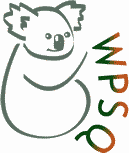 The State Government push to open up more Greenfield developments has given the green light for an aggressive push by developers to urbanize vast tracks of land.
The State Government push to open up more Greenfield developments has given the green light for an aggressive push by developers to urbanize vast tracks of land.
In Redlands, Woodlands Drive is one of the most picturesque areas, protected from urban development by the Redlands Local Planning Scheme, but it hasn't stopped the State Government nominating it as a potential site for urbanization. The consequence is that developers have lodged a development application for commercial and residential development over this beautiful area.